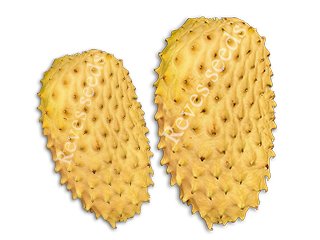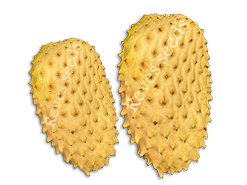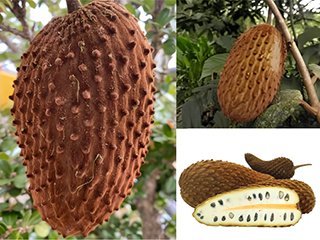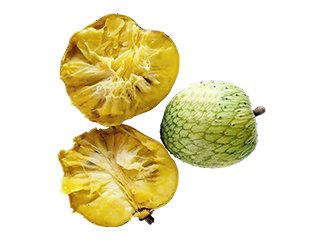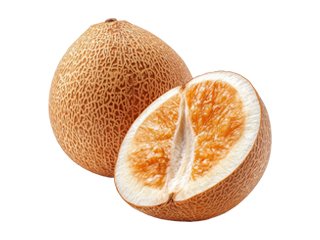Soursop muricata Gold F1
This cultivar is one of the most promising, boasting vigorous growth and plant stability, providing farmers with reliable production and exceptional quality over the long term. The tree grows between 5 and 6 meters tall, with shallow, drought-sensitive roots and a semi-circular crown. Its leaves are dark green, glossy, and emit a pungent aroma when scratched. It begins to bear fruit 3 to 4 years after planting and can live up to 25 years. Flower Specifications: Solo, hermaphrodite, greenish-yellow flowers, 4–5 cm long, appear on the trunk and branches. Self-pollinating, partially dependent on insects. Self-pollination makes this cultivar an ideal choice for commercial cultivation, as it reduces reliance on external factors to ensure fruiting. Fruit Specifications: Large, heart-shaped to oval fruits with a green skin that turns golden yellow when ripe. The surface is covered with smooth, non-sharp edges. The flesh is creamy white, juicy, and has a rich flavor that combines pineapple, banana, and citrus. It contains a few hard, brown seeds. These fruits are among the most sought-after for their unique tropical flavor and high juice content, making them highly sought-after in fresh markets and the juice industry. Soil Type: Prefers well-drained, sandy, loamy soil with a pH between 5.0 and 6.5. It does not tolerate heavy or salty soil, and growth is enhanced with organic fertilizer. Suitable Climate: Tropical to subtropical climate. It does not tolerate frost or cold temperatures below 0°C. It requires a relative humidity of 50–80%, 8 hours of direct sunlight per day, and protection from wind. Thanks to its good tolerance to high temperatures and humidity, this variety is a golden choice for cultivation in hot and temperate environments. Sugar Content: The fruit contains 12–18% natural sugars (glucose and fructose). The inner pulp constitutes 80–85% of the fruit's weight, making it rich in nutrients and suitable for industrial processing. Uses: Suitable for commercial use in nurseries and seed companies, and for production in warm regions where temperatures do not drop below -5°C. It is considered a promising economic variety and is used in the food and juice industries. It is also receiving increasing attention in some markets for medicinal uses due to its high nutritional value.



 Tiếng Việt
Tiếng Việt Francais
Francais